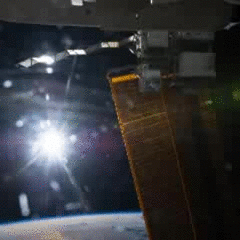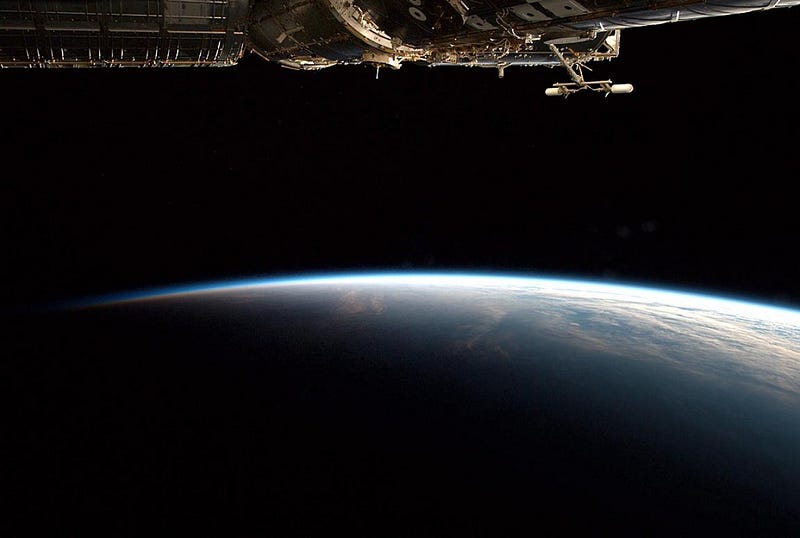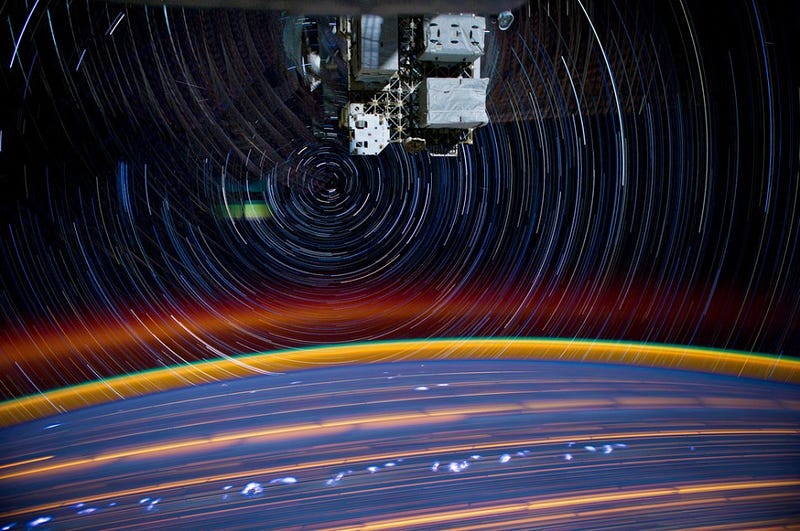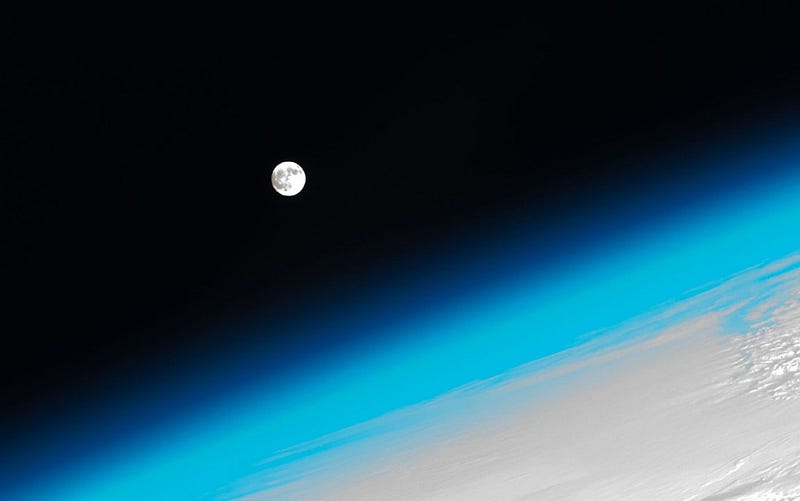Weekend Diversion: The world’s first Vine from space
Six seconds unlike any other you’ve ever seen is so worth it.
“I saw for the first time the earth’s shape. I could easily see the shores of continents, islands, great rivers, folds of the terrain, large bodies of water. The horizon is dark blue, smoothly turning to black. . . the feelings which filled me I can express with one word—joy.” –Yuri Gagarin
Each weekend, I like to take a break from talking about the scientific wonders of the Universe and share with you a little music and a little something wonderful and delightful. But today, I couldn’t stay away from sharing the wonder of space presented in a way I’ve never seen it before. So have a listen to a space age classic from The Byrds, Mr. Spaceman,
while I share with you six seconds unlike any other you’ve seen, courtesy of NASA astronaut and current International Space Station (ISS) crewmember and flight engineer Reid Wiseman:
For those of you who can’t play Vines (for some reason), here’s the same footage in GIF format.

What you’re seeing is an entire orbit of the ISS compressed into six seconds. There’s a fun little confluence of circumstances that’s made this possible for the first time:
- The ISS is in low-Earth orbit that’s highly inclined to the Earth’s axis, at some 52 degrees.
- It’s almost summer solstice, where the Earth’s northern hemisphere points towards the Sun, so that it’s 23.5 degree axial tilt is nearly maximally aligned with the Earth-Sun plane, and is maximally additive with the ISS’s incline.

- The ISS takes about 90 minutes to make a complete orbit, which it did at this interval of time very closely aligned with the day/night boundary on Earth.
- But it did so at an altitude of around 420 kilometers, meaning that even when it was directly above locations that were experiencing night, astronauts aboard the ISS could still see the Sun.

- And finally, Reid himself is brand new aboard the ISS (having launched only on May 29th of this year), and is the first astronaut in space to post a Vine!
And so while Don Pettit may have given us the first 360-degree star trails from the ISS a few years ago…

this is the first time I’ve ever seen the Sun make a 360-degree trip from a spacecraft orbiting the Earth!
That’s quite an amazing six seconds, isn’t it?
For what it’s worth, the ISS also approximately follows the Earth’s day/night boundary (the terminator) during the winter solstice, too, but spends the majority of its time over the night side of the planet rather than the day side. Want to know something fun that comes along with it?

The extra elevation makes it possible to see the Sun, the day/night boundary of Earth and — when we have it — a full Moon silhouetted against the blackness of space all at once, something impossible from the surface of our world!

Go ahead and make sure you’re following Reid on Twitter; he’s taking some excellent photographs too, and is clearly enjoying the astounding wonder of space. Thanks to him, many others and the power of modern technology, we get to all share in it, too!
Have a comment? Leave it at the Starts With A Bang forum on Scienceblogs! And if you missed our Comments of the Week (and my responses), check those out, too!





